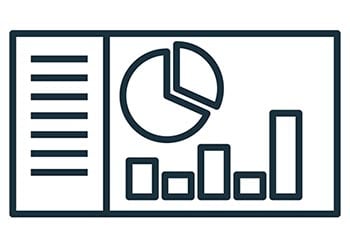
October 15, 2025, Berkeley, CA — The nonpartisan California Policy Lab, in partnership with the State of California’s Committee on the Revision of the Penal Code, announced the release of the California Prison Population Data Dashboards today.
The California Prison Population Dashboards (www.californiaprisondata.org) provide data on the characteristics of all people incarcerated in state prison since 2015. Users can sort data from the California prison population, including by race, gender, and age; crimes committed and sentence lengths; sentence enhancement details; and county of conviction. The Dashboards also allow users to sort this data by different time periods.
According to Michael Romano, the Chairperson for the Committee on the Revision of the Penal Code, which worked together with CPL to create the dashboard, “For the first time, lawyers, policy-makers, and the general public can see detailed information about who goes to prison, for which crimes, for how long, and from which counties. That creates a much more granular level of detail than was historically available to the public.”
The interactive Dashboards include the following three frames:
the current population (people who were incarcerated as of June 2025),
admissions (people admitted to prison from 2015 through June 2025); and
releases (people released from prison from 2015 through June 2025).
Each frame includes the population count and indicators for the offense category and group, serious or violent convictions, second- or third-strike enhancements, and demographic distributions for race, sex, and age. There are 12 additional charts showing the most commonly used sentence enhancements. Depending on the frame, the average sentence length, time served, or length of stay may also be shown. The dashboards can be filtered by subpopulations using any of the variables (e.g. White women with drug offense convictions) and by county. Admissions and releases can also be filtered by any year from 2015 to 2025.
“What makes these dashboards so powerful is that they turn raw data into an interactive tool for data exploration,” said Mia Bird, Assistant Professor of Public Policy at UC Berkeley and a member of the research team that created the dashboards. “They give the public and policymakers direct access to answer their own questions about California’s prison population.”
The interactive Dashboards show how the CDCR admissions and release populations have changed over the past ten years, and allow users to see detailed information about specific subsets of these populations over time.
To complement the Dashboards, CPL and the Committee on Revision of the Penal Code are working with researchers at Stanford Law School to make additional data publicly available that will enable more detailed analysis on prison incarceration trends in California
Data Source
The California Department of Corrections and Rehabilitation (CDCR) provides data to the Committee on Revision of the Penal Code about people currently in prison custody and people who have been admitted and released over time. The California Policy Lab compiled these data to create these dashboards. The dashboards contain no personal identifying information and limit the cell size for the information displayed to a minimum of ten people.
More about the California Prison Population Data Dashboards
Please see the dashboard’s documentation guide for additional information about the data used, how to interpret the data, and how to compare the data to the statistics available in the official CDCR Population Data Points dashboard.
Example insights: The three figures below provide examples of the types of insights that can be generated through the Dashboards:
Insight 1: People 50 and older make up 30% of the current prison population and have, on average, served over 18 years in prison.
Figure 1. Prison sentence and time served by age group for adults incarcerated in CDCR as of June 2025
Insight 2: In comparing 2015 to 2024, California has reduced its overall use of sentence enhancements, with substantial reductions in the use of the gang enhancement and the so-called “nickel prior” enhancement.
Figure 2. Share of people admitted to prison with enhancements, 2015 vs. 2024
Insight 3. The average years sentenced for robbery vary across racial and ethnic groups and across California’s three largest counties. Among men admitted to prison for robbery in 2024, White men consistently received shorter sentences statewide and in all three counties.
Figure 3. Average sentence for men admitted to prison for robbery in 2024, by race and county
###
The California Policy Lab is an institute based at the University of California that generates research insights for government impact. Through hands-on partnerships with government agencies, CPL performs rigorous research across issue silos and builds the data infrastructure necessary to improve programs and policies that millions of Californians rely on every day.

